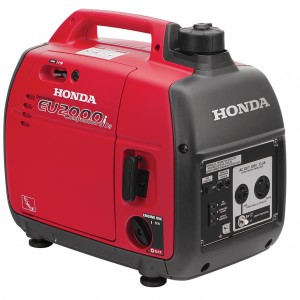
Honda Generator Safety
Customer safety is very important to Honda, so we want to point out hazards of improper generator operation. Carbon monoxide (CO) poisoning, electrocution, and fire are hazards that can be avoided by following instructions in the owner’s manual and on the generator safety labels.
Carbon Monoxide Poisoning
A generator’s exhaust contains toxic carbon monoxide, which you cannot see or smell. Breathing carbon monoxide can KILL YOU IN MINUTES. To avoid carbon monoxide poisoning, follow these instructions when operating a generator:
- Only run a generator OUTSIDE, far away from windows, doors, and vents.
- Never operate a generator inside a house, garage, basement, crawl space, or any enclosed or partially enclosed space.
- Never operate a generator near open doors or windows.
- Get fresh air and seek medical attention immediately if you suspect you have inhaled carbon monoxide.
Early symptoms of carbon monoxide exposure include headache, fatigue, shortness of breath, nausea, and dizziness. Continued exposure to carbon monoxide can cause loss of muscular coordination, loss of consciousness, and then death.
Electrocution
A generator produces enough electrical power to cause serious shock or electrocution if misused.
Using a generator in wet conditions such as in rain or snow, near a pool or sprinkler, or with wet hands could result in electrocution. Keep the generator dry.
Connecting a generator to a building improperly could allow electrical current to feed back into utility lines, creating an electrocution hazard for utility workers. Connections to a building must isolate generator power from utility lines and comply with all local laws and electrical codes.
Fire
Parts of a generator become very hot during operation and remain hot for a while after stopping the engine. Be careful not to touch the muffler while it is hot. Let the engine cool before storing the generator indoors.
Keep flammable materials away from the generator when it is running.
Keep the generator at least three feet (one meter) away from buildings when the engine is running. The generator needs at least three feet of clearance on the top and all four sides for cooling.
Gasoline is extremely flammable and gasoline vapors can explode. Do not refuel while the engine is hot or running, and do not overfill the fuel tank. Refuel only outdoors in a well ventilated area. Never smoke near gasoline, and keep flames and sparks away. Store fuel in an approved container.
Additional Information
Please follow the instructions in the owner’s manual and on the generator safety labels.
Refer to the CPSC/USFA news release for additional information.



